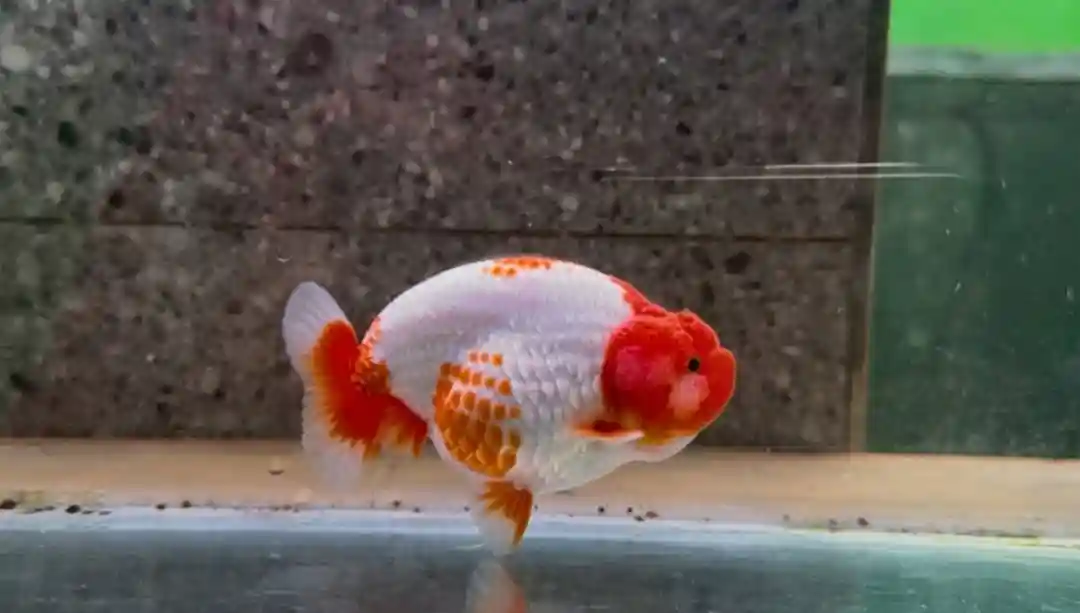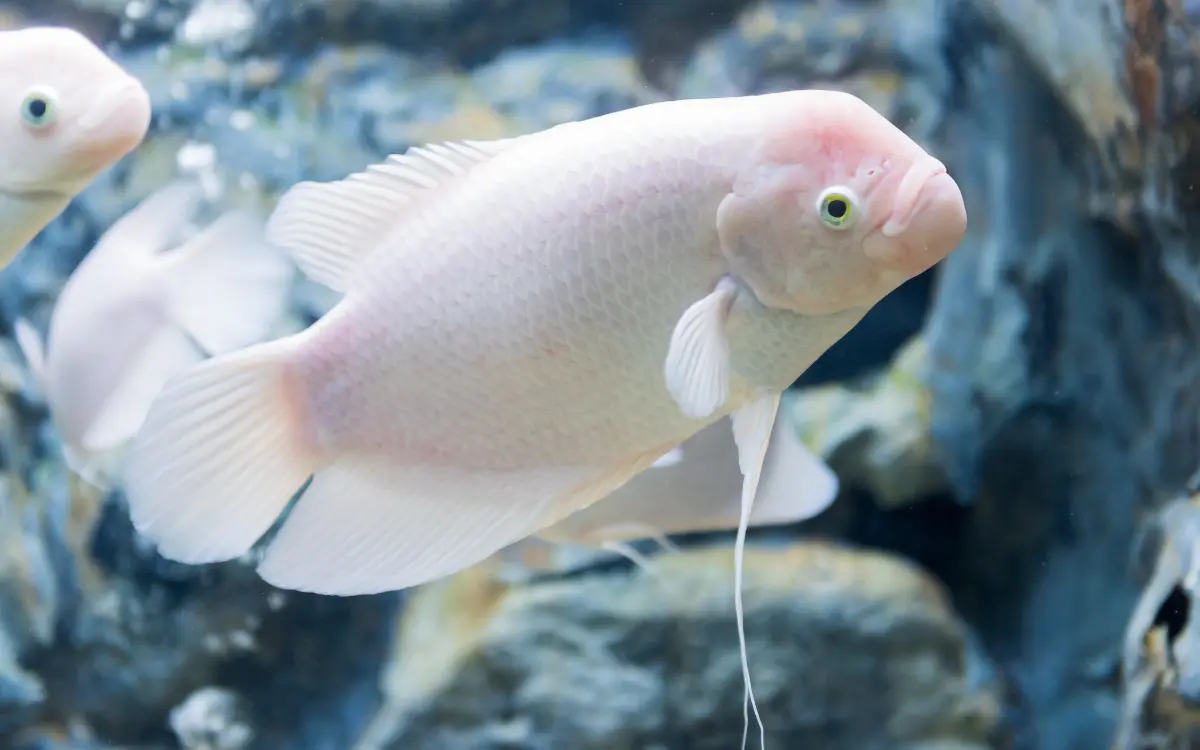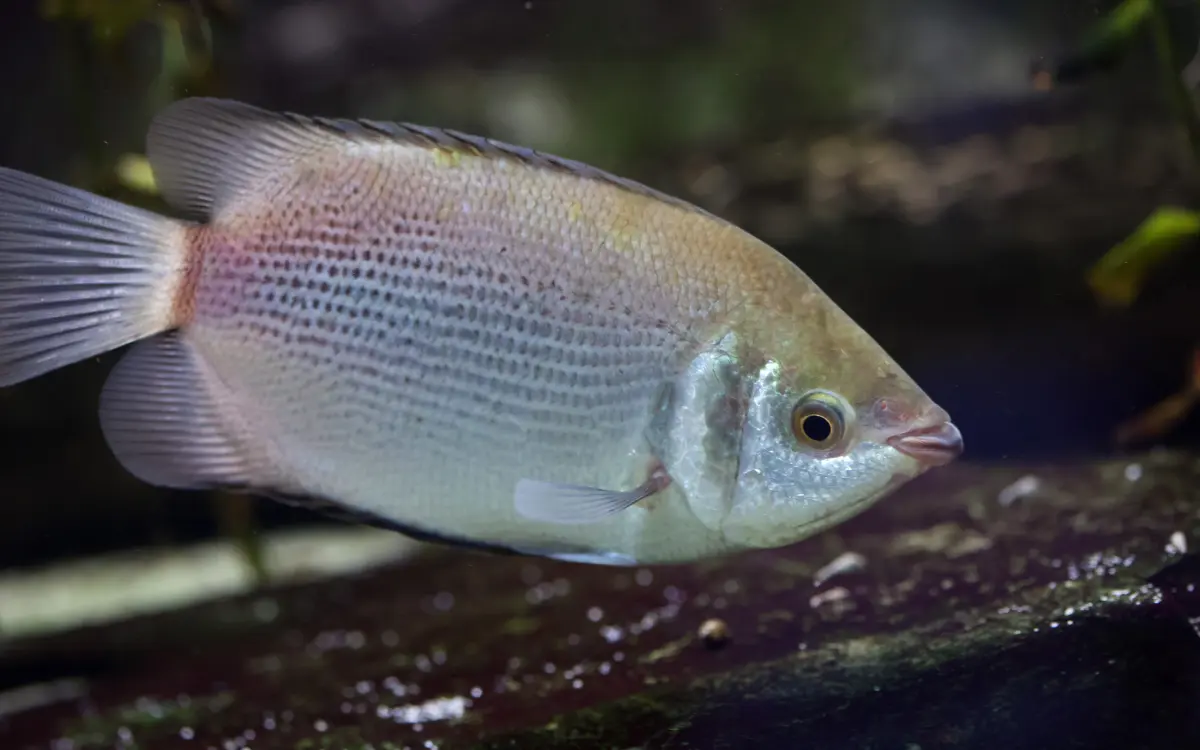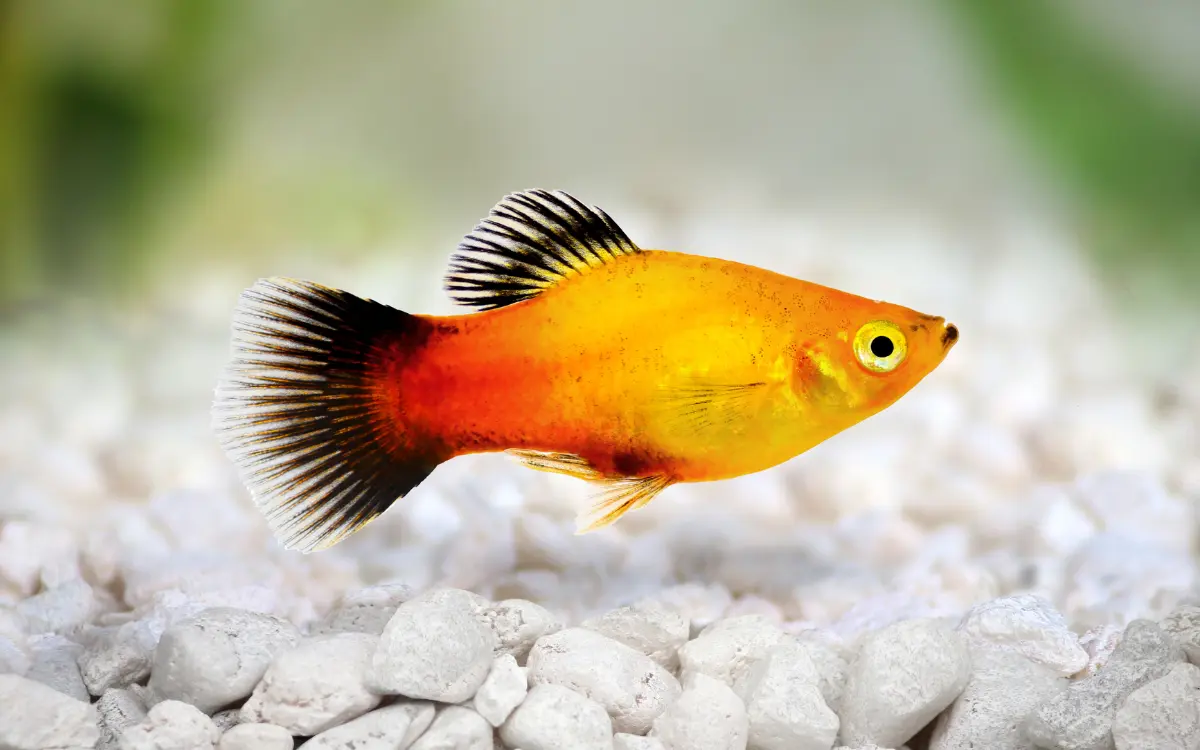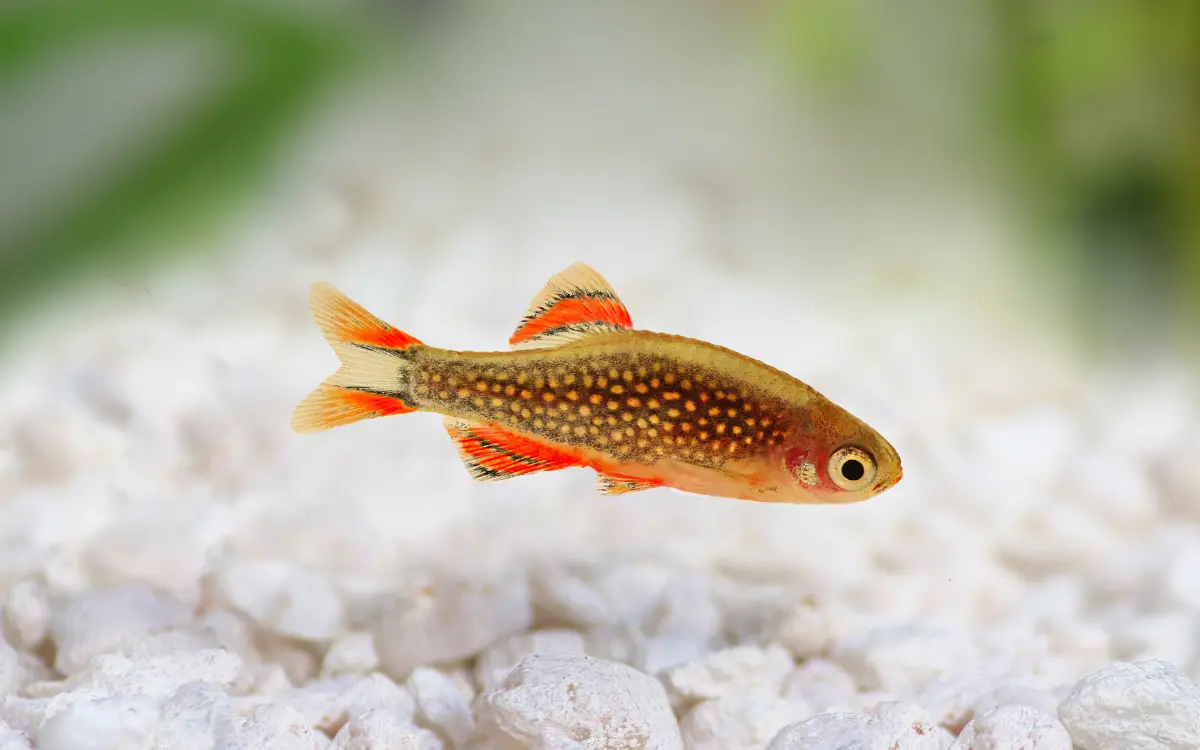Apistogramma Care: Tank Setup, Diet, Mates & Breeding Tips
Apistogrammas are some of the most fascinating freshwater fish you can add to a home aquarium. These small, colorful dwarf cichlids are packed with personality and perfect for aquarists who love aquascaping and natural tank setups. Known for their beauty and complex behavior, they’re an ideal choice for hobbyists ready to move beyond beginner fish—but without the aggressive temperament of larger cichlids.
In this care guide, you’ll learn exactly how to keep Apistogrammas healthy and happy—covering everything from ideal tank conditions and diet to tank mates and breeding tips.
More fish to know: Colorful Freshwater Fish | Community Fish
What Are Apistogrammas?
Species Overview
Apistogramma is a large genus of dwarf cichlids from South America, boasting over 90 species with unique colors, patterns, and behaviors. Some of the most popular species include:
- Apistogramma cacatuoides (Cockatoo Cichlid)
- Apistogramma agassizii
- Apistogramma borellii
Size: 2–3.5 inches
Lifespan: 3–5 years
Temperament: Semi-aggressive, especially during breeding
Skill Level: Intermediate
These fish are known for their intelligence, territorial nature, and unique social behavior, especially in species that form harems.
Natural Habitat
In the wild, Apistogrammas are found in slow-moving waters and shallow forest streams of the Amazon basin. These areas are often rich in leaf litter, with dark, tannin-stained water and low light levels.
Their natural environment is typically:
- Soft, acidic water
- Leaf-covered sandy bottoms
- Plenty of roots and hiding spaces
Creating a similar setup in your tank helps them feel right at home.
Apistogramma Tank Setup
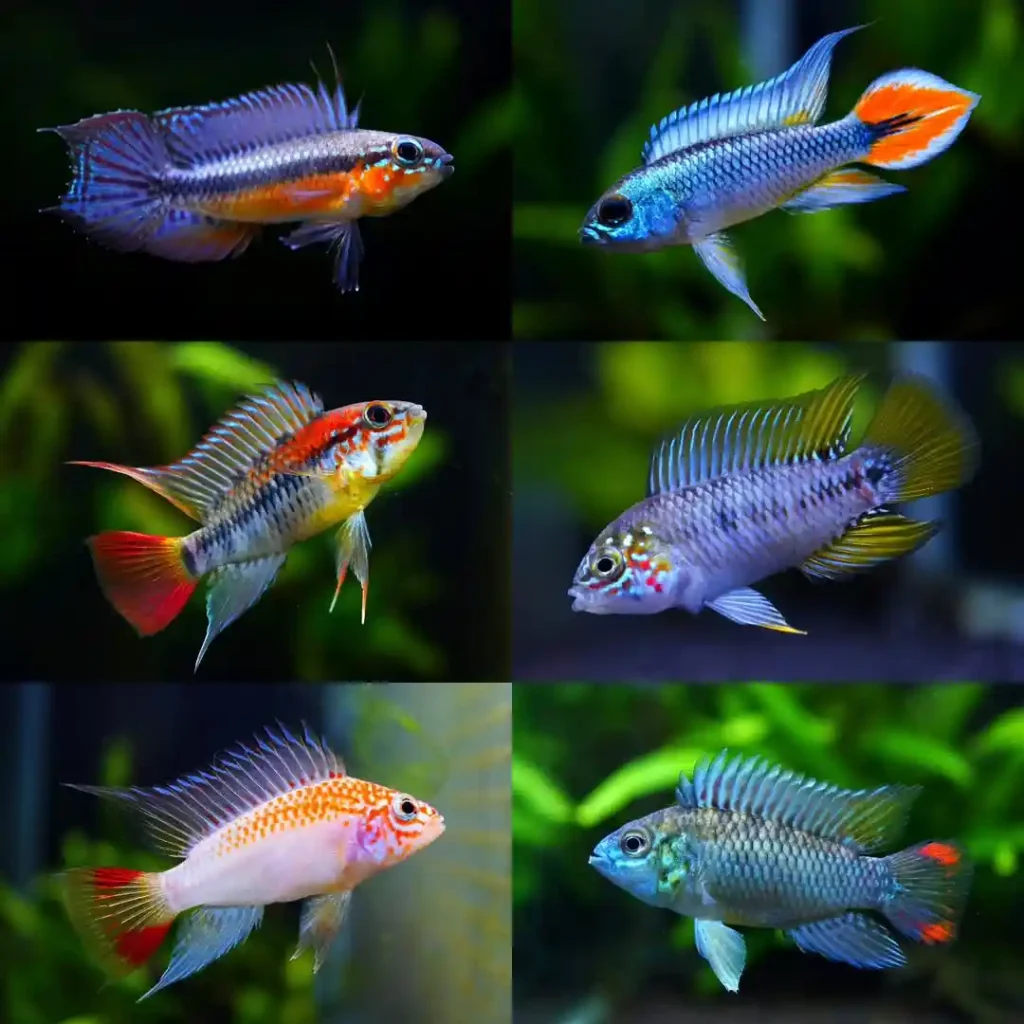
Tank Size
For a single pair, a 20-gallon tank is the minimum, though more space is always better. If you plan to keep a harem (one male with multiple females), go for 30 gallons or more, with multiple hiding spots.
Water Parameters
| Parameter | Ideal Range |
| Temperature | 75–82°F (24–28°C) |
| pH | 5.5–7.0 (species-dependent) |
| Hardness | Soft water preferred (1–8 dGH) |
Stability is key—Apistogrammas are sensitive to sudden changes in water chemistry.
Filtration and Flow
These fish come from gentle, slow-moving environments. A sponge filter or canister filter with a pre-filter sponge is ideal. Keep the current low, and aim for crystal-clear water to avoid stress or disease.
New in auqahobbiest: Freshwater Fish Tank Setup
Décor & Aquascaping
Apistos love structured environments. Focus on:
- Caves and shelters: Use coconut shells, ceramic tubes, or rock piles
- Dense plants: Java fern, Amazon swords, and floating plants are great
- Shaded zones: Floating plants like Amazon frogbit help diffuse harsh light
They do well in biotope-style aquariums, mimicking their native blackwater conditions.
Substrate
A fine sand substrate is ideal. Apistogrammas naturally sift through sand for food. A dark substrate not only mimics their environment but also makes their colors pop.
Feeding Apistogramma Cichlids
Diet Essentials
Apistos are carnivores that thrive on live and frozen foods. Their favorites include:
- Baby brine shrimp
- Bloodworms
- Daphnia
- Mysis shrimp
You can supplement with high-quality micro pellets designed for carnivorous cichlids.
Feeding Tips
Feed them small amounts twice a day. Uneaten food should be removed within 10–15 minutes to maintain water quality.
- Rotate protein sources
- Avoid dry-only diets
- Keep feedings consistent during breeding conditioning
Compatible Tank Mates
Best Tank Mates
Apistogrammas can be peaceful in the right community. Great tank mates include:
- Corydoras catfish – bottom dwellers that won’t compete
- Otocinclus – great algae eaters and gentle
- Pencilfish – top-level swimmers, low aggression
- Ember tetras – small, peaceful, and vibrant
- Hatchetfish – occupy the top, no conflict with Apistos
What to Avoid
Skip these if you want a peaceful tank:
- Fin-nippers like tiger barbs
- Larger cichlids
- Fast eaters that steal food before Apistos get a chance
Consider Reading Bottom Feeders for Tanks
Apistogramma Breeding Tips
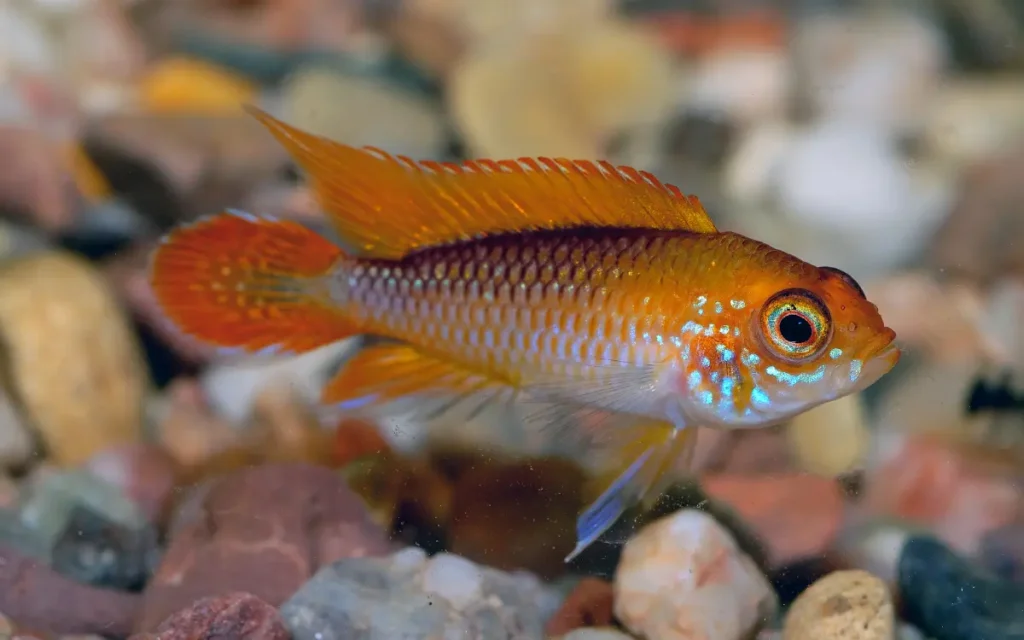
Breeding Behavior
In breeding mode, males will display vibrant colors and perform courtship dances. Females will select a spawning site, usually a cave or small crevice, and lay eggs inside.
- Males may court multiple females (harem breeding)
- Females guard eggs and fry
- Males patrol the area
Breeding Setup
- Increase temp slightly: 78–82°F
- Add multiple caves or hiding places (1 per female)
- Use leaf litter or Indian almond leaves to simulate blackwater
Feed adults live foods regularly to encourage spawning.
Fry Care
- Eggs hatch in 2–4 days
- Fry are free-swimming by 5–7 days
- Start feeding with infusoria or liquid fry food, then move to baby brine shrimp
Carefully siphon out uneaten food to keep fry safe from ammonia spikes.
Common Apistogramma Health Issues
What to Watch For
- Stress signs: hiding, color loss, lack of appetite
- Internal parasites: bloat, stringy feces
- Infections: white patches, labored breathing
These issues often result from poor water quality or tank mate aggression.
Prevention Tips
- Do weekly water changes (20–30%)
- Use RO water or soft water if needed
- Don’t overcrowd or keep multiple males in small tanks
Read also : Freshwater Fish Disease Guide
Are Apistogrammas Right for You?
Apistogrammas are best for aquarists who are:
- Comfortable maintaining stable water conditions
- Interested in natural setups and aquascaping
- Looking for a colorful, rewarding fish with personality
They’re not ideal for first-time fishkeepers, but with a little experience, they’re incredibly fun and even addictive to keep—especially if you’re ready to try breeding.
FAQs
Are Apistogrammas hard to care for?
Not exactly. They’re hardy if water conditions stay stable. They need soft water and a well-structured tank.
Can I keep more than one male?
Yes, but only in larger tanks (30+ gallons) with plenty of territory dividers like caves and plants.
Do they need caves to breed?
Absolutely. Caves or small enclosed spaces are necessary for egg-laying and fry protection.
How do I tell male and female apart?
Males have longer fins and brighter colors. Females are smaller, rounder, and more subdued in color.
Can Apistogrammas live in a community tank?
Yes, as long as tank mates are peaceful and the tank is large enough to provide hiding spots.

